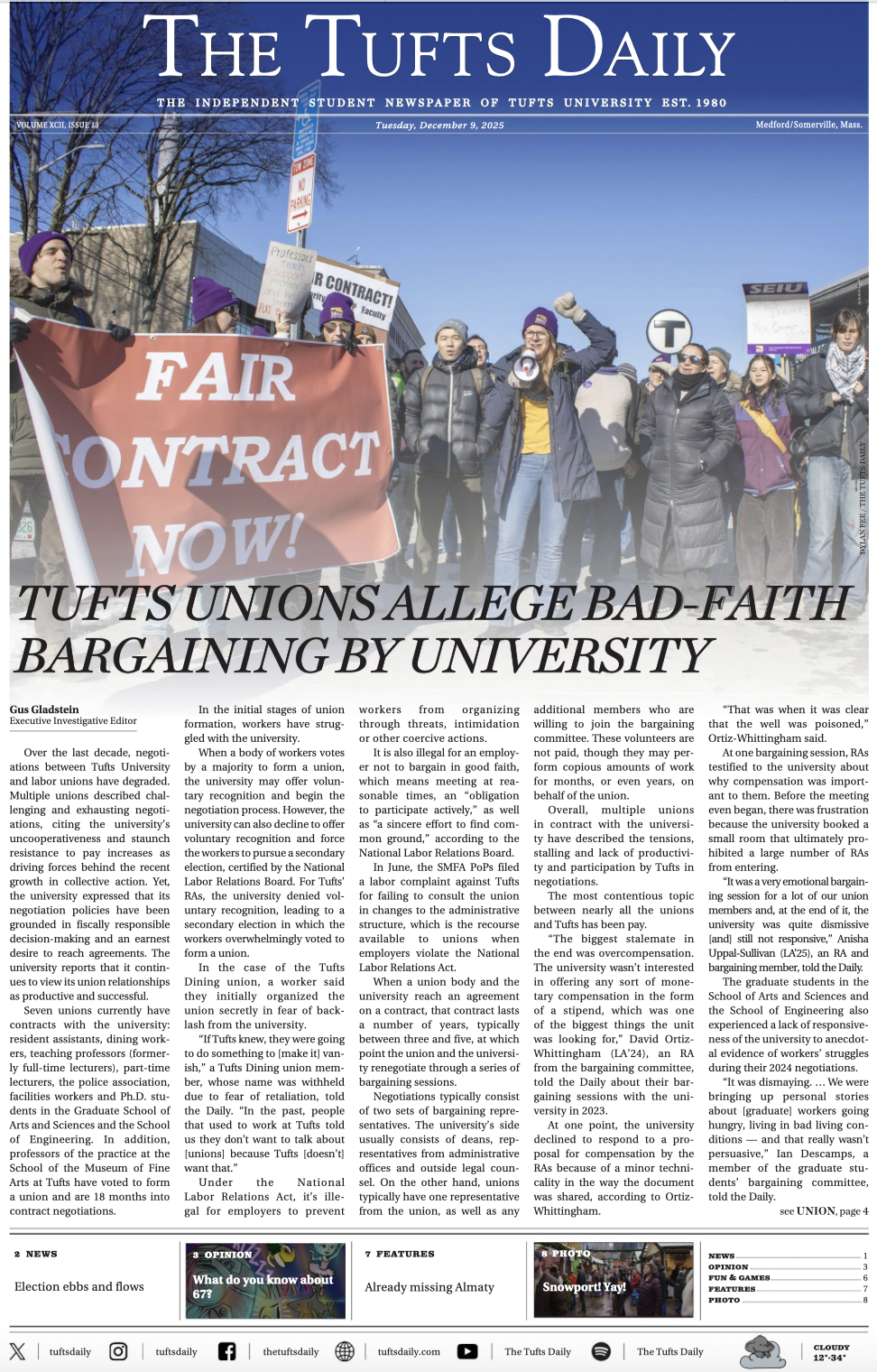Every baseball fan can rattle off the key members of the 2004 Boston Red Sox: Curt Schilling, Jason Varitek, Pedro Martinez, etc. But the name Bill James might draw a few blank stares.
Yet it just might be James, an author and statistical consultant for the Red Sox, who has had more impact on the way people think about baseball over the last quarter century than any player of the game itself.
Using a variety of statistical techniques, James has helped to create a new field, known as sabermetrics, that searches for objective ways to evaluate baseball players. The concepts generated from sabermetrics are becoming increasingly implemented in Major League Baseball by teams like the Oakland A's and the Red Sox. Now Tufts University is joining the fray, the first major university to do so.
A new class in the Experimental College, called "The Analysis of Baseball: Statistics and Sabermetrics," gives students a background in this new field. The course is led by Andy Andres, an assistant professor of natural sciences at Boston University and a data analyst for baseballhq.com. David Tybor, a doctoral student at the Tufts School of Nutrition, and Morgan Melchiorre, an IS Specialist at Tufts' Boston Campus, also help teach the class.
"I have read the sabermetric work of Bill James for years now, just as a fan of the game," Andres said. "For me, when I started to play fantasy baseball, that is when I became hardcore about my own baseball analysis. I started to model how to win the game of fantasy baseball, and I kept learning more and more about MLB game modeling and analysis."
"These statistics are not as complex to model and analyze as other data sets I have worked with [as a biology professor]," Andres continued. "But gaining objective knowledge of baseball, especially in the face of conventional wisdom - [for example], 'Pokey should play over Bellhorn!' -- is very cool indeed."
In the class, Andres tells students that a lot of the conventional wisdom about baseball is just plain wrong. Students are taught that commonly used statistics like batting average and runs batted in are not terribly accurate measures of batter performance. It turns out that, historically, statistics like on-base percentage are more highly correlated with runs scored - the main objective of the game - than stats like batting average.
Students are then introduced to more complicated statistics like VORP (Value of Runs Over a Replacement Level Player) and Runs Created (the number of runs a team would score each game if it consisted of the same player hitting in each spot in the lineup). All of these statistics tend to be more accurate in measuring the performance of a batter. The class concludes with students undertaking their own research projects on such issues as new ways to evaluate pitching coaches and the effect of various injuries on pitchers.
"I like the idea of acquiring objective baseball knowledge, not just opinions," said Jeff Bourgeois, a sophomore who is taking the class. "Having hardcore facts about how to evaluate a player makes you feel a lot smarter than the average fan."
Brian O'Halloran, the Director of Major League Administration for the Boston Red Sox, was a guest speaker for the class earlier in the semester. O'Halloran didn't give away the trade secrets of the Red Sox, but he shed some light on the team's philosophy.
"We use statistics way more than the average club [to evaluate players]; we're one of the most progressive clubs," O'Halloran said. "But we still use a balanced approach that includes scouting."
Noah Kaufman, another sophomore who is taking the class, was very impressed with O'Halloran.
"I thought it was awesome to get a firsthand perspective of someone in a Major League office who evaluated players," Kaufman said.
There are some students in the class who hope to follow in the footsteps of O'Halloran.
"I work at Fenway Park as a tour guide now, but in the future another job in the industry might interest me," Bourgeois said.
Unfortunately for anyone interested in joining an MLB front office, it's becoming increasingly hard to do so because the supply and demand factors are daun-ting.
"People in my office have traded six-figure salaries to work for $8 an hour as an intern for the Boston Red Sox," O'Halloran said." They wouldn't trade back for anything - especially now that they have a ring."
You never know, perhaps their grounding in sabermetrics will tip the scales in favor of a few Jumbos.<$>





